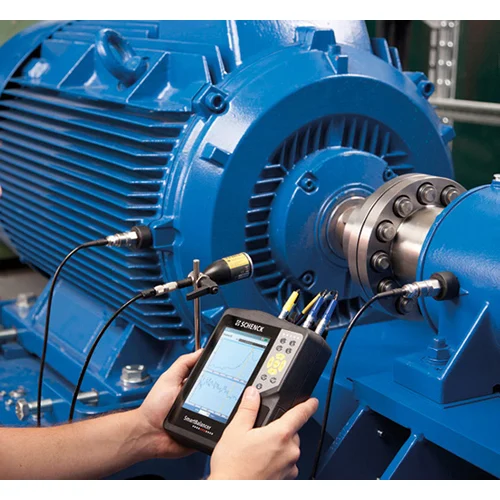In-situ Dynamic Balancing
The International Standards Organization defines unbalance as:
“That condition which exists in a rotor when vibratory force or motion is imparted to its bearings as a result of centrifugal forces.”
Why Balance? All rotating components experience significant quality and performance improvements if balanced. Balancing is the process of minimizing vibration, noise and bearing wear of rotating bodies. It is accomplished by reducing the centrifugal forces by aligning the principal inertia axis with the geometric axis of rotation through the adding or removing of material. In order to understand the basics of balancing it is necessary to define the following fundamental terms.

We offer the highest balancing grade by measuring phase very precisely using the latest FFT data collector & laser-based optical phase reference. This system makes balancing very fast by precise positioning of balancing mass thus avoiding the requirement of trim balancing.
When unbalance has been identified and quantified, the correction is straightforward. Weight has to be either added or removed from the rotating element. The ultimate aim is to reduce the uneven mass distribution so that the centrifugal forces and hence the vibrations induced in the supporting structures are at an acceptable level.
Benefits achieved by Dynamic Balancing would be:
- Minimize vibration, Minimize noise.
- Minimize structural stress.
- Minimize operator fatigue and annoyance.
- Increase machine life.
- Increase bearing life, Increase product quality.
- Increase personnel safety.
- Increase productivity.

